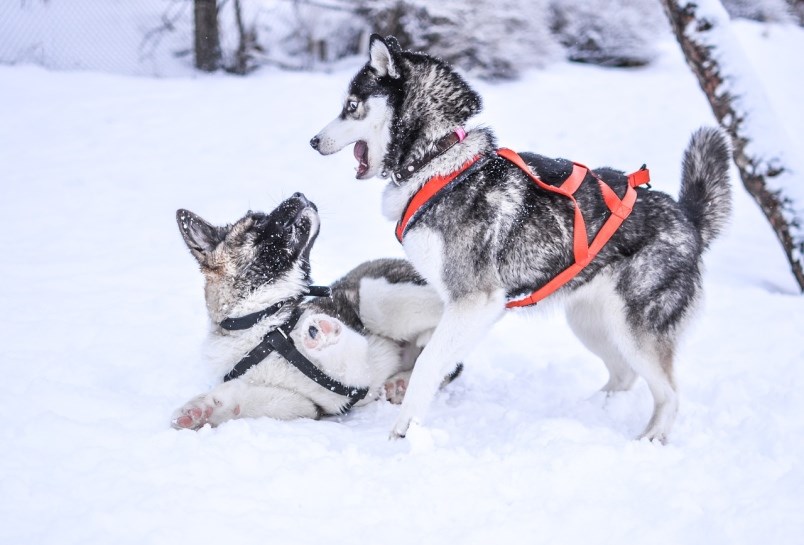With wintertime, the cold temperatures can provide a few challenges for our animals. While most dogs and cats spend more time indoors over the winter, some are primary outdoor animals that need extra care.
Since winter is going to be here for a while, walking your dog is a great way for them to burn some energy and for you to spend time with them. To make the outdoors more enjoyable you can provide your dog with booties and a dog coat, to keep them warm longer.
One outdoor activity that may have a few hazards is ice fishing. If a dog were to step into a hole and get wet, it is important to dry them off quickly and make sure they stay warm. Also be aware of fish hooks, especially if bait is being used.
The most common wintertime problem we see in our indoor dogs and cats is extra weight gain. It’s typical that animals don’t get outside as much and don’t get as much exercise as they do in summer.
The result is excessive calorie consumption compared to activity level and needless weight gain. This can be prevented by decreasing the amount of food they get when winter starts, if they are going to be less active. This will save money and prevent unnecessary weight gain, which can exacerbate arthritis and any breathing issues. The opposite is true for dogs and cats that spend most of their time outdoors, as they will be burning more calories to keep warm and need more food.
Frostbite is usually a result of not having adequate shelter when the temperature plunges. The most commonly affected areas are the tips of the ears, the feet and the tail. Frostbite often results in pain and damage to the affected areas, where the worst cases lose the extremity. Signs of frostbite can include painful cold areas followed by very warm and swollen areas. Providing proper shelter will help prevent frostbite.
Hypothermia is uncommonly seen especially if suitable shelter is provided. A risk factor for hypothermia is if animals are sick or dehydrated for another reason and then they are not able to maintain their internal temperature normally.
Very young and very old animals are at increased risk as well. Animals may show symptoms by being less aware of their environment and becoming sleepy, and can also have shallow breathing, muscle stiffness and shivering at the start of signs.
Severe cases can lead to coma and death. If hypothermia is suspected, bring the animal indoors and wrap them up in a warm blanket and contact your local veterinarian.
For outdoor animals, it may seem like a good idea to use a heat lamp to keep them warm, but this is not recommended. Heat lamps can be a cause for thermal burns and fires. If the shelter is enclosed and insulated, the use of heat lamps can actually lead to hyperthermia – when the animal’s body temperature rises too high. Adequate shelter can be provided by good bedding in a small enclosed, insulated area.
Whether your furry friends are mainly indoors or outdoors, for the winter be sure to take some easy steps in order to enjoy the season with them.
Dr. Sydney Routley is a 2012 graduate of the Western College of Veterinary Medicine. She was raised in Fort St. John and first started working at the North Peace Veterinary Clinic as a student back in 2004.
- Dr. Sydney Routley, Alaska Highway News



